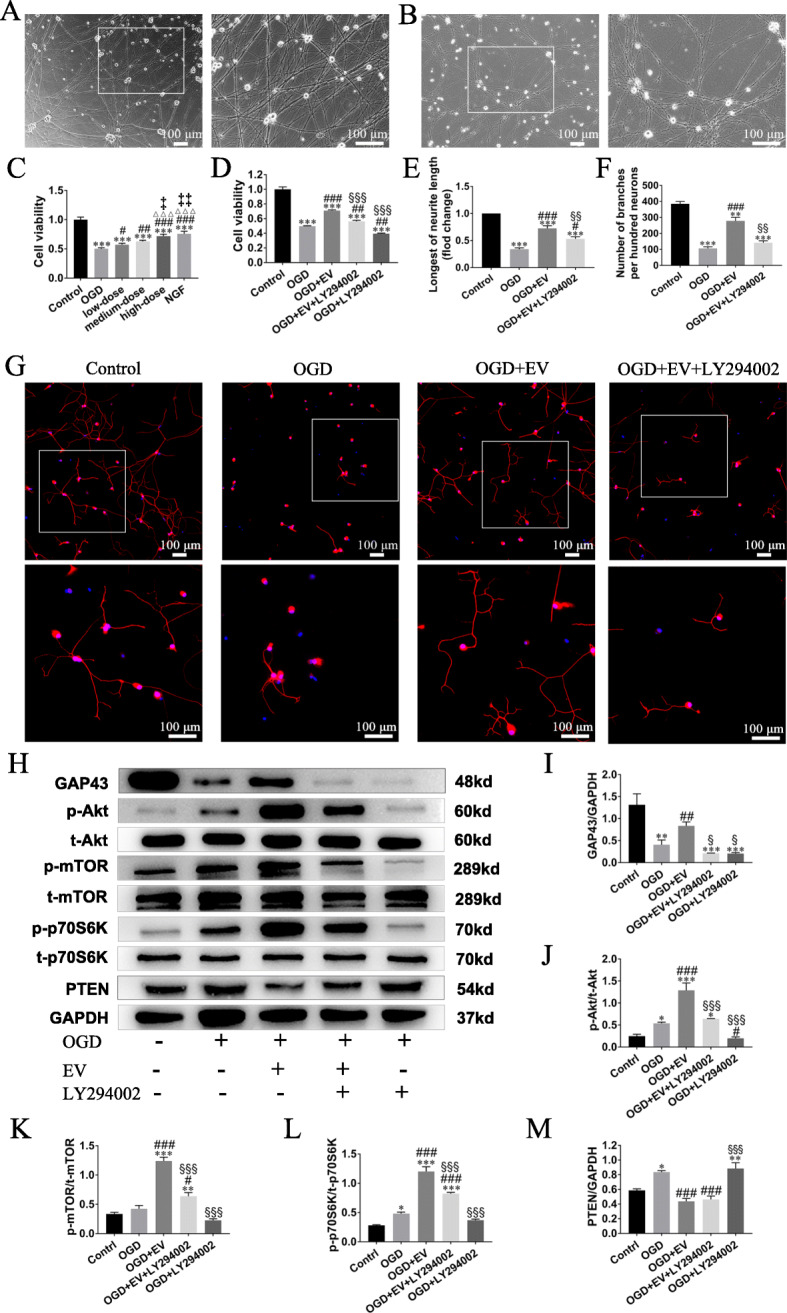Fig. 4.

Treatment of OGD-injured sensory neurons resulted in neurite regrowth and pro-cell viability via molecule mechanism. a Neurites of sensory neurons extended and formed network 4 days after culture. Scale bar, 100 μm. b Neuron body shrinkage and neurite ruptures were shown in representative image 8 h after OGD. Scale bar, 100 μm. c, d Histograms showing the concentration-dependent effect of SKP-SC-EVs, and the inhibiting effect of LY294002 (PI3K blocker) on cell viability of OGD-injured neurons, and the neuronal viability in the high-dose EV group is equal to that in the NGF (positive control) group. e, f Statistical analysis of the longest neurite length and the number of branches per hundred cells. g Representative image showing neurite growth of sensory neurons in different groups with staining of TUJ1 (red), and nuclei were labeled with DAPI (blue). Scale bar, 100 μm. h Representative image of Western blot analysis for GAP43, p-Akt, p-mTOR, p-p70S6K, and PTEN expression in different groups. i–m Histograms showing increased expression level of GAP43, p-Akt, p-mTOR, and p-p70S6K in the OGD + EV group, and decreased expression level when LY294002 was added, while PTEN expression increased in the OGD group and decreased in the OGD + EV group. n = 3; △△△p < 0.001, compared with the low-dose group; ‡p < 0.05, ‡‡p < 0.01, compared with the medium-dose group; *p < 0.05, **p < 0.01, ***p < 0.001 compared with the control group; #p < 0.05, ##p < 0.01, ###p < 0.001 compared with the OGD group; §p < 0.05, §§p < 0.01, §§§p < 0.001 compared with the OGD + EV group
